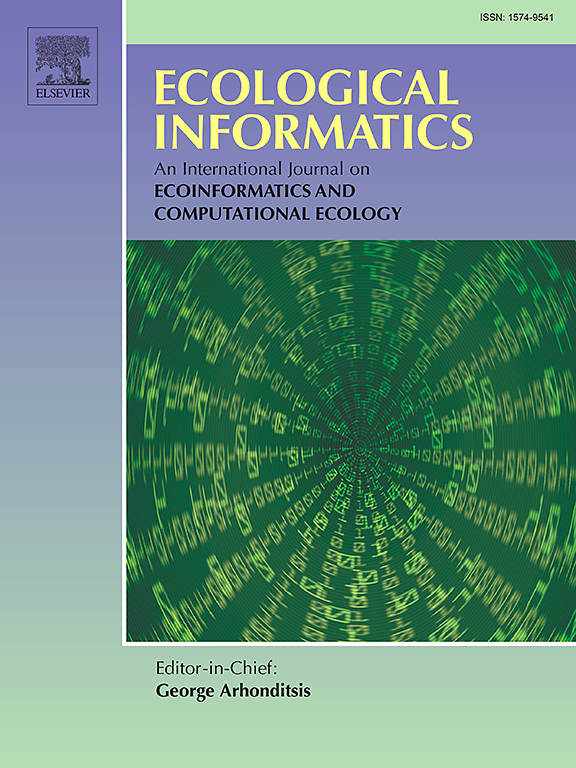net.raster: Interaction network metrics for raster data
IF 5.8
2区 环境科学与生态学
Q1 ECOLOGY
引用次数: 0
Abstract
The interaction among species from different trophic levels is essential for ecosystem functioning and the use of bipartite networks is often useful for improving our understanding of multiple ecological processes, such as seed dispersal, pollination, and predation. Still, we are just paving ways to better understand spatial variation and macroecological aspects of interaction diversity. Here we introduce net.raster, an R package to calculate network and species-level metrics using rasterized presence-absence data and bipartite interaction networks as input, aiming to place species interaction studies into a spatial perspective. First, we focus on the spatialization of the functions and arguments from the bipartite R package using the terra package. Then, we enhance the visualisation of interaction patterns across space by allowing a raster layer of species interactions in addition to species distribution models (SDM). To date, all available packages that compute mutualistic network metrics rely only on matrices, or edge lists and network graphs derived from them. The net.raster package applies the calculations for each cell of a raster, allowing users to extrapolate known interactions across space and to visualise spatial patterns of bipartite network descriptors. The resulting rasters of interaction metrics are based mainly on the geographical extrapolation of interaction records between pairs of species and the resulting calculations use co-occurrence as a proxy for an interaction between species. Like other network analysis packages, net.raster allows users to calculate network topography indices using: a) the entire web, b) selecting the lower or upper level of each group, or c) selecting each species, choosing both levels or one level of interest at a time. Thus, the spatial processing and visualisation of fundamental bipartite networks provided by net.raster may fill a current gap in macroecological and biogeographical research and enable the understanding of the spatial variation of interaction networks. It also may open other questions in the macroecological and biogeographical study of networks, inspiring new insights into the conservation of important ecosystem services, such as seed dispersal and pollination.
求助全文
约1分钟内获得全文
求助全文
来源期刊

Ecological Informatics
环境科学-生态学
CiteScore
8.30
自引率
11.80%
发文量
346
审稿时长
46 days
期刊介绍:
The journal Ecological Informatics is devoted to the publication of high quality, peer-reviewed articles on all aspects of computational ecology, data science and biogeography. The scope of the journal takes into account the data-intensive nature of ecology, the growing capacity of information technology to access, harness and leverage complex data as well as the critical need for informing sustainable management in view of global environmental and climate change.
The nature of the journal is interdisciplinary at the crossover between ecology and informatics. It focuses on novel concepts and techniques for image- and genome-based monitoring and interpretation, sensor- and multimedia-based data acquisition, internet-based data archiving and sharing, data assimilation, modelling and prediction of ecological data.
 求助内容:
求助内容: 应助结果提醒方式:
应助结果提醒方式:


